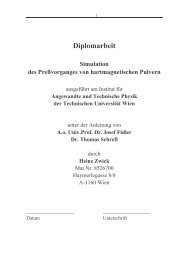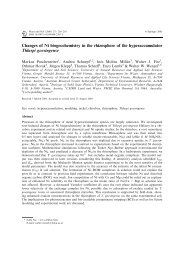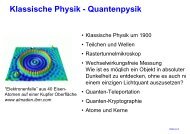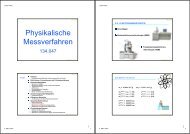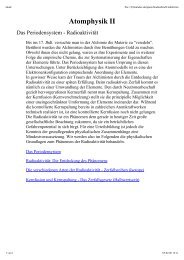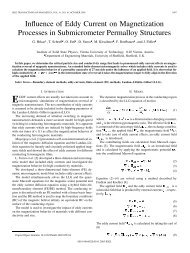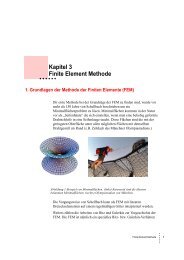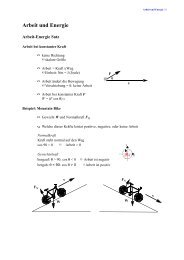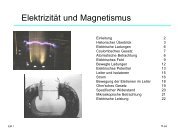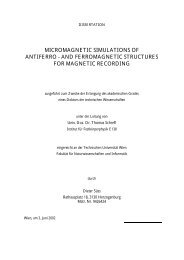Read Back Signals in Magnetic Recording - Research Group Fidler
Read Back Signals in Magnetic Recording - Research Group Fidler
Read Back Signals in Magnetic Recording - Research Group Fidler
Create successful ePaper yourself
Turn your PDF publications into a flip-book with our unique Google optimized e-Paper software.
Appendix B<br />
Appendix B<br />
To calculate the magnetic field of conductive materials (4.50) has to be solved:<br />
Δ H =−curl<br />
j. (B.1)<br />
In addition boundary conditions are needed to make this problem solvable. The derivation of<br />
the boundary conditions for a surface po<strong>in</strong>t r is given here. We have to calculate<br />
∂ ∂<br />
∂n ∂n<br />
out <strong>in</strong><br />
( H () r − H () r ) = lim ( H( r+ nε) −H( r−nε) )<br />
ε→0<br />
. (B.2)<br />
n denotes the unit vector normal to the boundary face <strong>in</strong> po<strong>in</strong>t r. We start from the Biot-<br />
Savart Law (2.46)<br />
1 r± nε−r′ Hr ( ± nε ) = ×<br />
4π ∫ j<br />
V r± nε−r′ Now we separate a half sphere<br />
Volume V.<br />
3<br />
dV ′ . (B.3)<br />
1/2<br />
Kη () r with radius η (η � ε ) and midpo<strong>in</strong>t r from the<br />
1 r± nε− r′ 1 r± nε−r′ Hr ( ± nε ) = × dV ′ + × dV ′<br />
4π ∫ j<br />
4π<br />
∫ j<br />
3 3<br />
1/2 1/2<br />
V / Kη ( r) r± nε− r′ Kη<br />
( r)<br />
r± nε−r′ (B.4)<br />
In this half sphere the current density j is assumed to be constant. If j is a cont<strong>in</strong>uous function,<br />
1/2<br />
the mean value theorem tells us that there exists a po<strong>in</strong>t r ′′ ∈ K for which<br />
± η<br />
1 r± nε− r′ 1 r± nε−r′ Hr ( ± nε ) = × dV ′ + ( ′′ ) ×<br />
dV ′<br />
4π ∫ j jr<br />
4π<br />
∫<br />
. (B.5)<br />
3 ±<br />
3<br />
1/2 1/2<br />
V / Kη ( r) r± nε− r′ Kη<br />
( r)<br />
r± nε−r′ The <strong>in</strong>tegrand of the second <strong>in</strong>tegral can be expressed as gradient of a scalar term<br />
1 r± nε−r′ 1 1<br />
Hr ( ± nε ) = × dV ′ + ( ′′ ) × ∇′<br />
dV ′<br />
4π ∫ j jr<br />
4π<br />
∫<br />
. (B.6)<br />
r± nε−r′ 3<br />
±<br />
1/2 1/2<br />
V / Kη ( r) r± nε−r′ Kη<br />
( r)<br />
80



